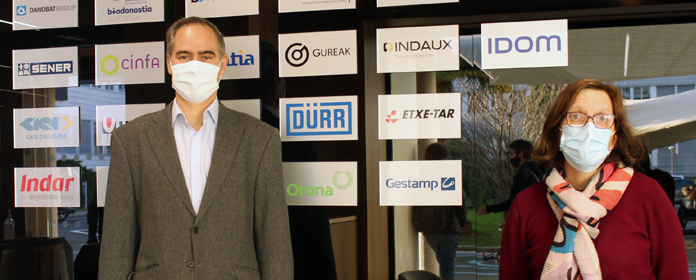Investigadores del CIMA identifican nuevos mecanismos implicados en pacientes con alto riesgo cardiovascular
Researchers at CIMA identify new mechanisms involved in patients at high cardiovascular risk
It could facilitate preventive treatments for 25% of the adult population.
A team of scientists from research center (CIMA) of the University of Navarra has identified a new molecular mechanism involved in the cardiovascular risk of patients with metabolic syndrome. The work, published in the "Journal of Hypertension" and "Free Radical Biology & Medicine", is included in a project that is part of the network Spanish research of Cardiovascular Diseases.
Metabolic syndrome is a group of disorders that, among other adverse effects, quadruples the risk of suffering a heart attack. It currently affects 25% of the Spanish population between 18 and 75 years of age. It has been shown that excess insulin in the blood has a decisive influence on the development of thrombosis in patients with metabolic disorders. The CIMA study analyzed the activity of the enzyme NADPH oxidase, which regulates the role of phagocytic cells in situations of hyperinsulinemia. While in physiological conditions the activity of NADPH oxidase defends the organism from bacterial infection, in situations of hyperinsulinemia the same oxidase actively participates in inflammatory processes and in the development of cardiovascular complications. "Using biochemical and molecular methods, we have observed that patients with metabolic syndrome and insulin resistance show an excess of this enzyme and generate higher amounts of superoxide. These factors are associated with a status of oxidative stress -that is, with an activation of prooxidant enzymes and an attenuation of the antioxidant systems- which, if chronic, increases the risk of developing thrombosis", explain Dr. Guillermo Zalba and Dr. Ana Fortuño, principal investigators of the study. Julen Bidegain, Pablo A. Robador and Gorka San José, scientists from the area of Cardiovascular Sciences at CIMA, under the supervision of Dr. Javier Díez, director of area, as well as doctors óscar Beloqui and Manuel Landecho, from the department of Internal Medicine at Clínica Universidad de Navarra.
According to the researchers, this study could facilitate the development of new therapies against cardiovascular disorders in patients with metabolic syndrome. "Currently, one of our studies is focused on the effect that some drugs applied in this pathology can have on the activation of NADPH oxidase. This line opens up new therapeutic targets based on the inhibition of the enzyme. This would prevent the development of cardiovascular accidents," says Dr. Ana Fortuño.





